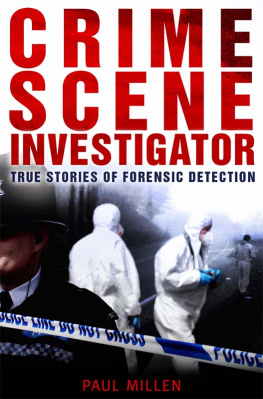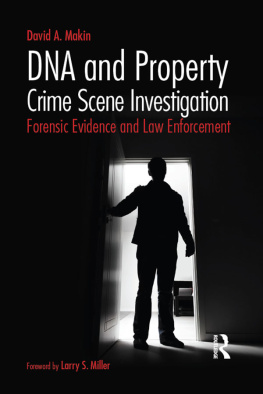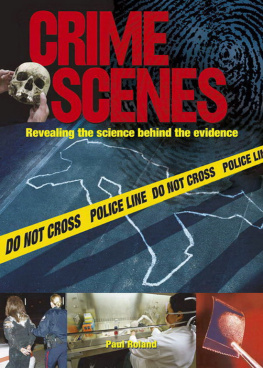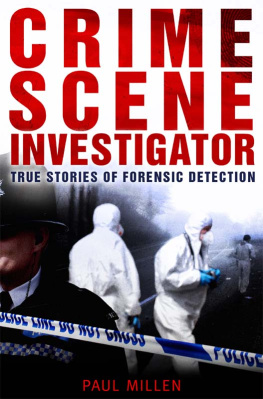Paul Britton was born in 1946. Following degrees obtained in psychology from Warwick and Sheffield Universities, he has spent the last twenty years working as a consultant clinical and forensic psychologist, based in Leicestershire. He has advised the Association of Chief Police Officers Crime Committee on offender profiling for many years and currently teaches postgraduates in clinical and forensic psychology. He has a growing involvement in the treatment of young offenders, forensic dysfunctional families and traumatized victims of crime and military services. He is married with two children. His new book, Picking Up the Pieces, is now available from Corgi Books.
Winner of the Crime Writers Association Gold Dagger Award in 1997 for best non fiction.
Copyright 1997
THE JIGSAW MAN (v1.0)
By
PAUL BRITTON
The remarkable Career of Britains Foremost Criminal Psychologist
AUTHORS NOTE
I have selected the particular cases reported in The Jigsaw Man because they show the beginnings and development of professional psychology used in the investigation of crime, and also because the fact of my involvement in each is public knowledge, with the outcome of the judicial process known. I will not discuss those cases, in the public or the private sector, where secrecy remains important.
Occasionally details of crimes or the investigative process have been obscured. This is to protect witnesses, victims, or a continuing investigation and to avoid showing would-be offenders how not to be caught.
Details which would identify individuals mentioned in the clinical cases have all been altered, except where these are a matter of public record.
Chapter 1
On Tuesday morning, 22 November, 1983, I looked out my office window, across the terrace and the unkempt garden to the fields beyond, and saw a strange procession. Dozens of men emerged from the trees, shuffling forward in a long unbroken line. Clouds of condensed vapour billowed from their faces almost like speech bubbles that dispersed and reformed with each breath.
Occasionally, someone in the line would stop and squat near to the ground. The rest would pause, waiting and leaning a little closer to the frozen grass and mud. Although wrapped up against the cold, I saw no warmth in their faces or delight in their task.
What are they doing? asked Anne Chalmers, a secretary in the psychology department.
They look like policemen, I said.
Mmm.
She slipped into silence and we watched together at the window, wondering what had brought the police to our doorstep; to Carlton Hayes Psychiatric Hospital in Narborough, Leicestershire.
The large Edwardian hospital was the dominating landmark for miles around, rising out of farmland between several picturesque villages in the East Midlands. When it was built between 1905 and 1907, as the county asylum, the journey by carriage or horseback from the surrounding market towns must have seemed like a trip to the middle of nowhere. In those days, all the surrounding farmland was owned by the hospital and worked by the patients so that the institution was virtually self-sufficient. But it could never shed the image of madness that haunts all such asylums and makes them places to be feared by locals, particularly children. Perhaps this is why the name was changed in 1938 from the Leicestershire and Rutland Lunatic Asylum.
Yet Carlton Hayes wasnt an intimidating or frightening place. Once inside the main gate a visitor was immediately struck by the sense of space and tranquillity as the road swung past the gatehouse, carpark, bowling green, cricket pitch and flower-beds before reaching the main body of the hospital. The larger buildings were fashioned from red brick with steeply pitched slate rooves and two massive brick chimneys that could be seen for miles around.
I remembered my first visit, five years earlier, when Id arrived to be interviewed for a traineeship as a clinical psychologist. Despite having been an honorary trainee for six months, I was still daunted by the sight of Carlton Hayes. The broad stone steps, oak doors, reception room and administrative corridor looked like something from an old town hall. The floors echoed and the oak doors swung on heavy hinges, with polished brass handles worn by years of turning.
The boardroom was lined with paintings of past incumbents, with their mutton-chop sideburns and stiffened collars. In the early days we could hold our departmental meetings around one end of the table but in later years the department expanded to fill the table.
I took up the post in October, 1978, and for the next three years began dealing with a broad range of patients and psychological problems. Much of my work was with outpatients at the Woodlands Day Hospital, a large country house with seven or eight bedrooms, about a quarter of a mile from the main hospital buildings. I also worked in the acute unit - a small four-ward section of the hospital where patients would be treated intensively for a few months before being discharged or moved into the longer-stay wards.
Most of the in-patients needed long term care, being psychogeriatrics who suffered from atrophy of the frontal cortex or from depression, or were younger men and women having severe psychiatric illnesses such as schizophrenia. I rarely had cause to visit the wards where the elderly patients with dementia were cared for, but am destined to never forget the wall of smell that overwhelmed everything else in those back wards. Over the decades it seemed that urine had seeped into the fabric of the building so that no matter how much it was scrubbed and polished, the smell would never go away.
Thankfully, the psychology department was set away from the main hospital buildings in a former medical superintendents house known as The Rosings. The two-storey red-brick house had a large bay window overlooking a small stone terrace where wed often sit and have lunch, opening a bottle of wine and watching the hares forage in the nearby fields.
Now there were heavier feet shuffling across the feudal farming strips and icy earth. Throughout the day, the police criss-crossed the fields and gathered beneath the trees deep in discussion. Being isolated at The Rosings, it was mid-afternoon before I learned the reason for their search.
Its a girl, said Anne Chalmers, obviously upset. Shes been murdered.
Murdered? Where?
One of our porters found her this morning on his way to work. She was lying beside the Black Pad.
Id never used the black cinder pathway, although I passed the entrance every day on my way to work. It ran along the perimeter of Carlton Hayes and acted as a shortcut between the village of Narborough immediately to the south and Enderby to the north, a walk of about fifteen minutes.
Do you know who she is? I asked.
A local girl, a teenager.
Suddenly I thought of my own daughter, Emma. Shed be on her way home from school about now and then shed take Jess, our white retriever, for a run in the fields before it grew dark. Like many fathers I was protective, but Emma had walked home from school ever since she was a youngster.
Whod do such a thing? asked Anne, getting more upset.
Theyll think its someone from here, I thought to myself. It would be a natural reaction - but the wrong one. Carlton Hayes didnt house violent or dangerous patients; most of them were so elderly and infirm that they needed assistance to go to the bathroom. The acute patients werewell-known and at the Woodlands Day Hospital we were treating neurotic and anxious people who were unable to cope with the vagaries of life that sometimes overwhelmed them. They werent seriously aggressive or violent.
That night, I watched the early evening news on television.
Detectives are investigating the murder of a fifteen-year-old schoolgirl whose partially clad body was found this morning beside a footpath near the village of Narborough, in the grounds of Carlton Hayes Psychiatric Hospital.
Next page











